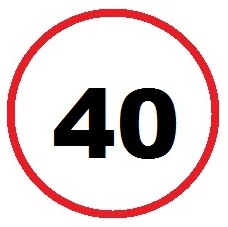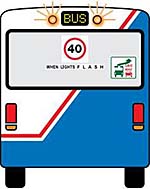Australia So Much to See



4. New South Wales
Various changes have been made following an evaluation from consultation during the trial period. This includes tow trucks and breakdown service vehicles when stopped and showing a flashing yellow light.
Motorists passing the flashing lights of a stopped tow truck, breakdown assistance or emergency vehicle in a higher speed environment need to exercise their judgment in order to slow down to a reasonable speed for the circumstances.
Speed limit in school zones and when passing school buses in New South Wales 40 km/h
40 km/h school zones help protect children on their way to and from schools at the times and places where they are often in high numbers.
This lower speed limit reduces the risk and potential severity of a crash. School zone signs, dragonís teeth road markings and flashing
lights improve the visibility of school zones.
40 km/h school zones are in force on all days which are not a weekend, a public
holiday or a publicly notified school holiday for government schools.
Most school zones operate from 8 to 9.30 am and from 2.30
to 4 pm. However, there are a small number of non-standard school zone times in NSW, which are identified by red/orange school zone
signs showing the times when school zone flashing lights operate.
Sourced from Road Safety NSW and Road Users Handbook NSW
While this does not include vehicles travelling in the opposite direction. There are flashing lights on the front of the bus to warn that children may be crossing and care is called for, so it would be wise
to slow to the same speed.

School buses use signs and orange flashing wigwag lights to warn you that they are picking up or setting down school children. The
lights begin to flash when the bus stops and the doors are opened. They keep flashing for about 30 seconds after the doors close and
continue even after the bus moves off. You must not drive past the bus in the same direction at more than 40 km/h while the lights
are flashing as there may be children crossing or about to cross the road.
5. Australian Capital Territory
Drivers must slow down to 40 km/h when passing emergency vehicles in the ACT. The rule will mean all vehicles must reduce their
speed to 40 km/h when passing an emergency vehicle with red or blue flashing lights, on the side of the road, including at random
checkpoints..
Speed limit in school zones in ACT is 40 km/h
The 40 km/h school zone slows traffic in the vicinity of the school. 40 km/h school zones in the ACT operate between 8 am to 4 pm.
The 40 km/h school zone speed limit must be observed even if school children cannot be seen. A 40 km/h school zone operates on all
gazetted school days including staff development days (pupil free days).
6. Northern Territory
No speed limit when passing emergency service vehicles has been implemented in the Northern Territory.
Speed limit in school zones in Northern Territory is 40 km/h
You must drive at 40 km/h or less in a school zone. This speed limit only applies on school days and will operate from 7 am to 5 pm during
school terms.
When buses are dropping off or picking up school children their headlights will also flash. Be careful when approaching a bus with
flashing headlights as there may be children crossing or about to cross the road.
The rule will be expanded to apply to motorists when passing stationary tow trucks and breakdown assistance vehicles displaying flashing yellow lights, in addition to emergency vehicles displaying flashing blue or red lights.
On higher speed roads (with a speed limit of 90 km/h or more), motorists will be required to slow down safely to a speed that is reasonable for the circumstances. Motorists must also provide sufficient space between their vehicle and the stationary tow truck, breakdown assistance or emergency vehicle displaying flashing lights. This will include changing lanes on a multi-lane road if it is safe to do so.